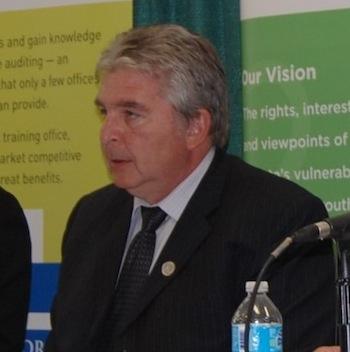Image Caption
By Shari Narine
Windspeaker.com Contributor
EDMONTON
The investigation into the deaths of three Indigenous girls—two by suicide—has resulted in the Office of the Child and Youth Advocate (OCYA) calling for the government to take steps to address compound trauma.
The three girls, Tina, 13, Shirley, 16, and Jazmine, 19, (not their real names) all died in 2015 and were either in care of the government or had received care within two years of their deaths.
“Trauma is a widespread issue with the child intervention population and so we think there needs to be lots more done about it,” said Advocate Del Graff, who released the investigative report Monday morning.
Although the girls had unique experiences, each also had mothers who abused substances. The girls also experienced early childhood trauma through exposure to violence, addictions and neglect. It was the effect of trauma on the developing brain that emerged as a key theme, reads the report.
All three girls also had multiple caregivers.
“When we’re talking about trauma for these individuals, what we’re talking about is compounded unresolved trauma,” said Graff. “When (trauma) becomes compounded it’s much more difficult to deal with. And when you add to that … the intergenerational impacts of trauma, it does mean a pretty significant change from the system that serves these kids.”
The report provides two recommendations, both of which address trauma: that the government create and implement cross-ministry training for all child-serving ministries, focusing on the impact of trauma at every stage of childhood development so appropriate interventions can be provided; and that the Children’s Services Ministry ensure that children and caregivers receive culturally-appropriate, timely interventions that directly address the impact of trauma on the developing brain.
In 2015, the OCYA offered another trauma-related recommendation in the case of 15-year-old Makayla, who attempted suicide. That recommendation called for young people to be assessed for the impact traumatic events had on them and for case plans be developed to address those impacts.
As well, in April 2016, the OCYA released a special report entitled “Toward a Better Tomorrow: Addressing the Challenge of Aboriginal Youth Suicide.”
Six of the 12 recommendations addressed trauma-related issues, although not specifically calling them “trauma.”
“There has been some progress … but certainly nowhere near enough,” said Graff.
He does note that there are young children who experience trauma and do receive the support they need. But not enough of this is happening.
“What I do know is the information that we have … lets us know that there’s an awful lot of work to do,” he said.
He adds that work is being carried out on childhood trauma, noting that Alberta Health Services has a “great” online training initiative for trauma-informed care, and that there are Indigenous groups and Elders that have “positive perspectives” when it comes to addressing trauma with children.
“The information is out there. What we need is the will to move forward and get the information and make those changes in terms of the way children’s needs are addressed in the province,” said Graff.
In response to the OCYA’s investigative review, Children’s Services Minister Danielle Larivee released a statement, saying the government was currently implementing training to support children and families dealing with grief and loss.
“As these stories themselves make clear, for too many First Nations people, trauma, grief and loss are deeply rooted in their families and communities. This requires a coordinated response that focuses not only on the individual and immediate safety needs of young people, but on the broader realities of community trauma. We will work to ensure First Nations are supported to lead community responses to these realities,” said Larivee in her statement.

